Key takeaways:
- Community housing development emphasizes the importance of resident involvement for creating inclusive environments and fostering connections.
- Affordable housing is essential for stability, quality of life, and the development of diverse communities.
- Engagement strategies, sustainability, and diverse funding sources are critical for successful housing projects.
- Personal housing journeys highlight the challenges of affordability, the significance of community support, and the lessons of adaptability and patience.
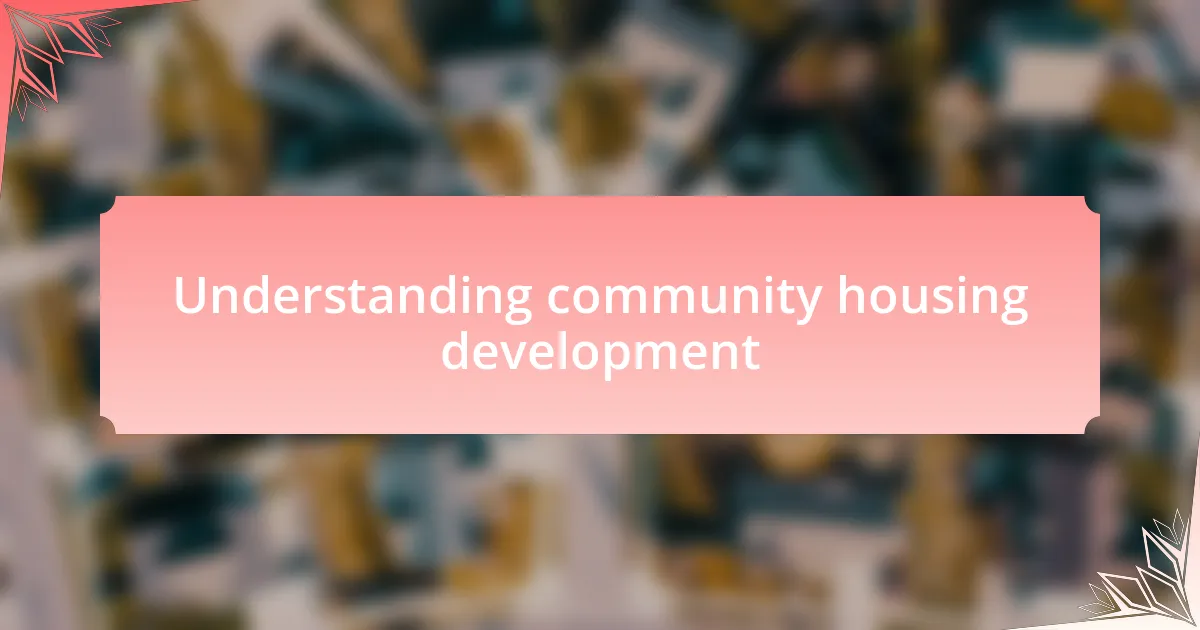
Understanding community housing development
Community housing development is more than just building homes; it’s about fostering connections among neighbors and creating inclusive environments. I remember visiting a newly established community housing project. The sense of belonging was palpable, underscoring how essential it is for residents to feel supported and engaged.
In my experience, successful community housing hinges on the input of local residents. I’ve often pondered: what better way is there to create a nurturing environment than to involve the people who will actually call it home? Too often, developers overlook the importance of listening to the voices of the community, which can lead to projects that miss the mark.
Every community is unique, with its own culture and needs. I discovered this firsthand when participating in a focus group for a new housing initiative. Seeing diverse perspectives come together to shape the vision really opened my eyes to the power of collaboration in community housing development. It reinforced my belief that when we co-create with residents, we not only build homes but also build lives.

Importance of affordable housing
Affordable housing is crucial because it directly impacts the well-being of individuals and families. I recall a friend who faced the daunting challenge of searching for a place to live within their budget while also being close to work and school. It struck me how frustrating this process can be and how, without affordable options, many are forced to make sacrifices that affect their quality of life.
When housing is affordable, it creates stability. I’ve seen families thrive when financial pressures ease, allowing them to focus on education, health, and community involvement instead. Isn’t it empowering to think that a safe and stable home can be the foundation for success in life? For many, affordable housing is not just about having a roof over their heads; it’s about building futures and dreams.
Moreover, affordable housing fosters diverse and vibrant communities. During my involvement in a local housing initiative, I met individuals from various backgrounds, each contributing unique perspectives that enriched our neighborhood. This diversity not only strengthens community ties but also promotes understanding and collaboration. How do we expect to grow as a society if everyone isn’t included in the fabric of our neighborhoods?
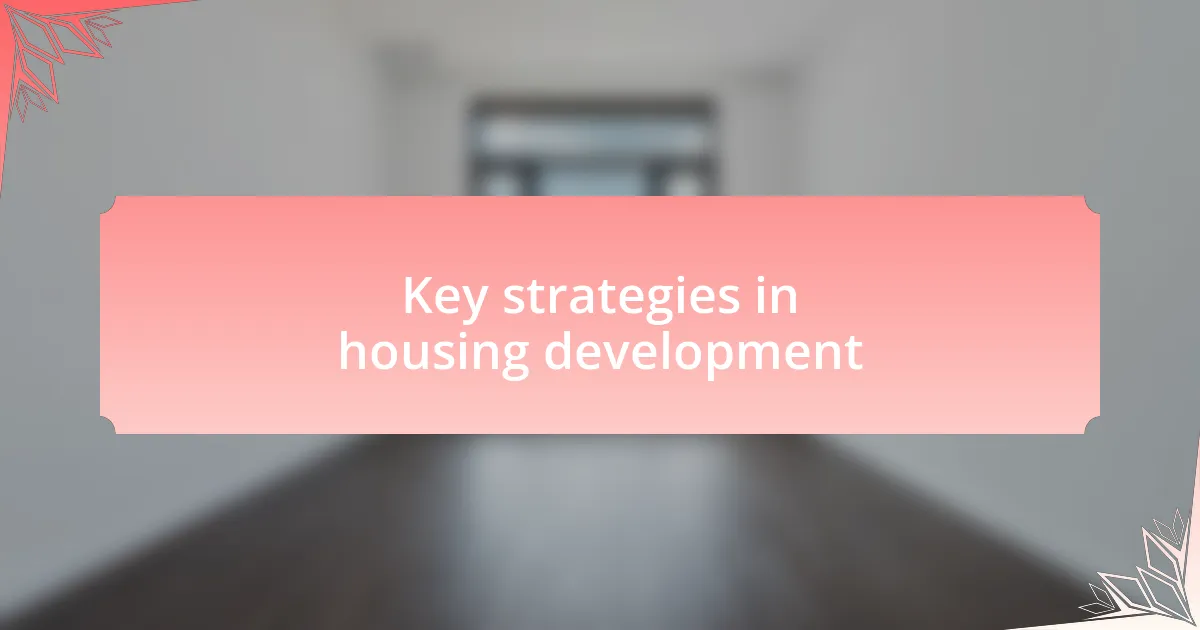
Key strategies in housing development
A key strategy in housing development is engaging with the community from the beginning. In my experience, when developers actively involve residents in the planning process, it fosters trust and a sense of ownership. I remember a project where community meetings transformed a proposal into a shared vision; it was incredible to see neighbors come together, voicing their needs and hopes. How often do we overlook the people who will live in these spaces when designing them?
Sustainability is another critical factor in housing development. I’ve witnessed how incorporating green building practices not only reduces long-term costs but also enhances livability. For instance, one neighborhood I worked with implemented energy-efficient designs that lowered utility bills significantly, allowing families to invest those savings elsewhere. Isn’t it reassuring to know that homes can be both economical and environmentally friendly?
Lastly, securing diverse funding sources plays an essential role in successful housing projects. I remember collaborating with various organizations to pull together financing that made building attainable. This blend of public, private, and philanthropic investments allowed us to stretch resources and create more housing units. Isn’t it fascinating how a well-connected funding strategy can turn ambitious visions into tangible realities?
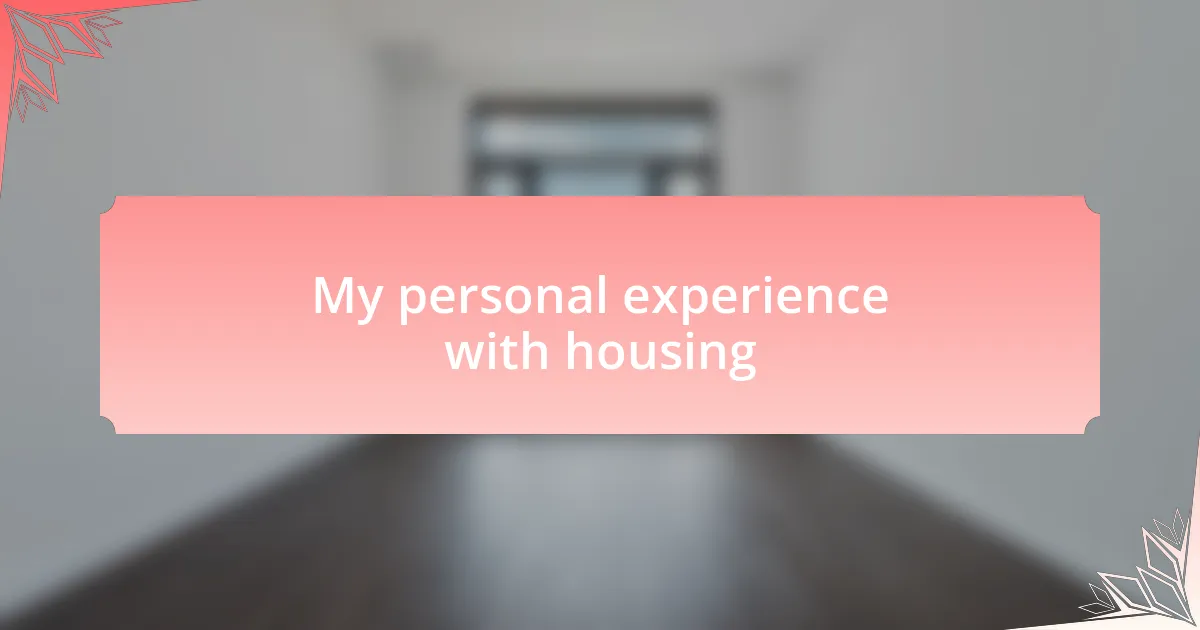
My personal experience with housing
When I think about my personal journey with housing, one memory comes to mind—finding my first apartment after college. It felt like stepping into a new chapter of my life, filled with excitement and a bit of anxiety. I remember the overwhelming sense of independence that washed over me as I signed the lease, knowing I was taking responsibility for my own space. Did I truly understand the nuances of this commitment back then? Not entirely, but I learned quickly the importance of budgeting for more than just rent.
As I navigated different living situations over the years, I discovered that community plays a pivotal role in shaping one’s housing experience. There was a time when I lived in a neighborhood that felt disconnected, and it struck me how much a vibrant community enriches our lives. I found joy in local gatherings—block parties and farmer’s markets—that transformed strangers into friends. It made me realize: how much do we gain when we prioritize connection in our living environments?
Reflecting on the challenges of advocating for affordable housing, I’ve often felt both frustrated and motivated. There was a project I supported that aimed to provide quality housing for lower-income families in a rapidly gentrifying area. Watching families express their relief and happiness during the opening ceremony filled me with hope. It raised a powerful question for me: How can we ensure that everyone, regardless of their background, has access to a place they can truly call home?
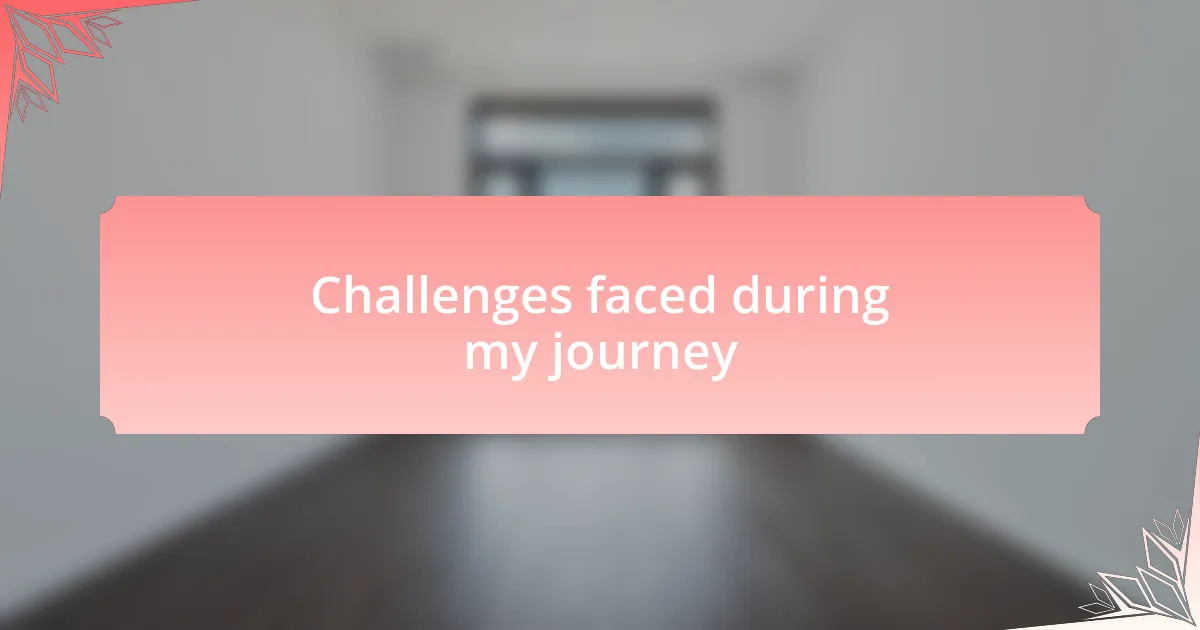
Challenges faced during my journey
Navigating my housing journey was often more challenging than I anticipated. One particular obstacle stands out: the constant balancing act of rising costs and limited income. There were months when I would sit down with my budget, feeling the weight of anxiety in my chest as I attempted to figure out how to make ends meet. It’s a tough pill to swallow when you realize that something as basic as housing can feel out of reach.
I also faced significant hurdles in securing supportive housing amidst rampant competition. During one particularly grueling search, I stumbled upon an apartment that seemed perfect, only to be met with a room full of hopeful renters at the open house. The sinking feeling in my stomach as I overheard other applicants discussing personal stories made me wonder: what truly makes a home, and how far would I go to create one? The experience taught me resilience and the realization that the hunt for a suitable home can often feel like a quest for acceptance.
In my advocacy work for community housing, I encountered pushback from stakeholders who didn’t see the value in investing in affordable options. I recall a heated meeting where I presented ideas for a new local project, feeling the urgency of the cause coursing through me, yet facing skepticism from decision-makers who prioritized profits over people. How could they overlook the human element in housing? That experience fueled my commitment to continue fighting for better options, reminding me that every home represents a story—and every story deserves to be heard.
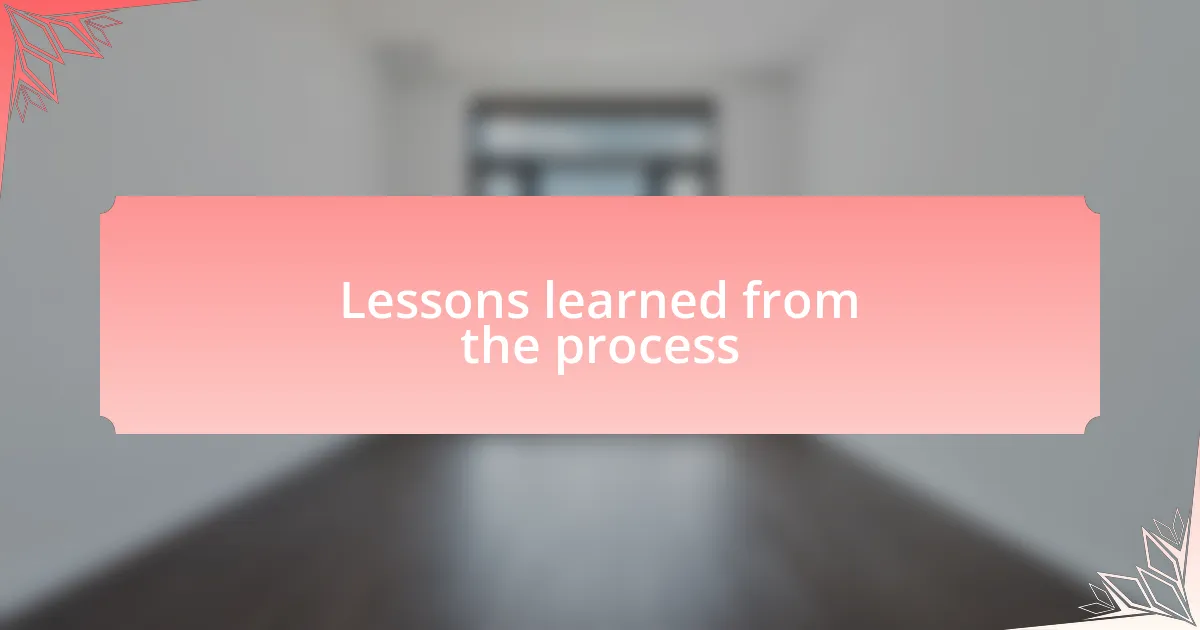
Lessons learned from the process
The housing journey revealed the importance of adaptability in the face of unexpected changes. I vividly remember a time when a sudden job loss threw my plans into disarray. Instead of succumbing to despair, I learned to pivot quickly, exploring alternative living arrangements and resources within my community that offered unexpected support. This taught me that flexibility can often lead to opportunities I might not have otherwise considered.
Another lesson was the value of community connections. During my search, I found that reaching out to friends and local groups not only provided practical leads but also emotional support. One evening, as I shared my experiences with a friend over coffee, they mentioned a nearby community housing initiative I had never heard of before. This simple conversation not only led me to a potential home but underscored the idea that sometimes, we need to lean on our networks to find the solutions we seek.
I also discovered that patience is not just a virtue but a necessity. There were weeks when the uncertainty felt unbearable, and I often questioned whether I would find a place I could call home. Yet, after what felt like an eternity of waiting, I found a small apartment that felt just right. I realized that good things often take time—sometimes, the journey itself opens doors that quick fixes cannot.